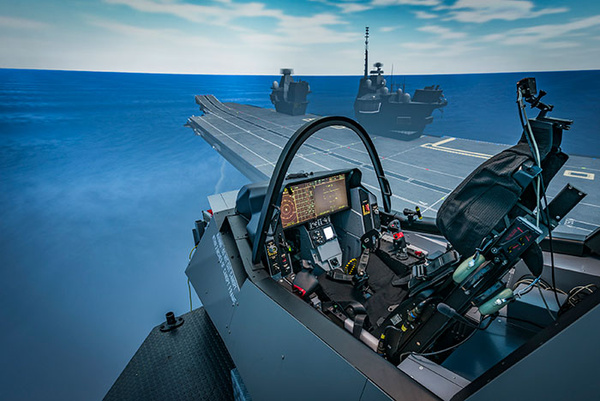
Pilots for the F-35 Lightning II are being helped in their preparations for the arrival of the Queen Elizabeth Class carriers with the launch of a new simulator by BAE Systems.
The bespoke simulator has been developed to give pilots a 360˚ immersive experience whilst training for flight trials on the new frigates. The wide range of view is required for pilots to spot any potential obstacles as they land on an aircraft carrier, where objects can often be located behind the aircraft.
Whilst practicing landing, pilots can also experience a range of difficult sea and weather conditions. The £2M simulator features a cockpit moved by an electronic motion platform and a full representation of the ship’s flying control tower (FLYCO), where a Landing Signal Officer on board the carrier will control aviation operations.
Training includes thousands of ski jump short take offs, as well as vertical landings that use both the vertical thrust from the jet engine and aerodynamic lift from the wings, allowing increased weapon and fuel loads compared to predecessor aircraft.
Pilots from both the US and UK will now train in the simulator over the next few months.
BAE Systems’ test pilot for the programme said: “The immersive experience is as near to the real thing as possible. The data will show us exactly what will happen when F-35 pilots fly to and from the Queen Elizabeth carriers. The trials we can run through the simulator are far more extensive than what we will do in the actual flight trials because we can run and re-run each trial until we have all the data we need. The simulator provides greater cost efficiency for the overall programme and is extremely important to the success of the first flight trials.”
The new simulator replaces a 1980s version designed for the Harrier jump-jet and the Hawk advanced jet trainer before being converted for F-35.
If you would like to join our community and read more articles like this then please click here
BAE Systems F-35 II lightning Queen Elizabeth Class Carriers








